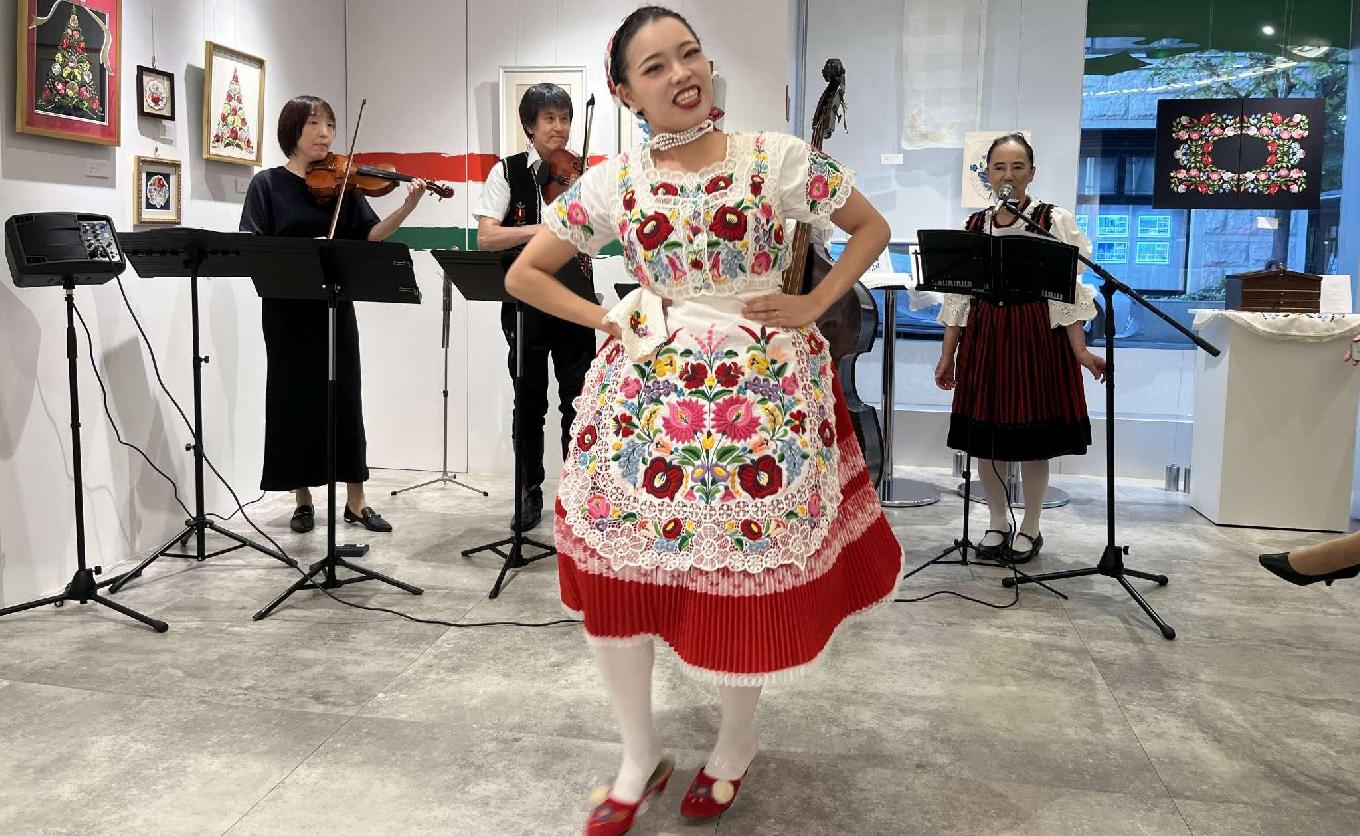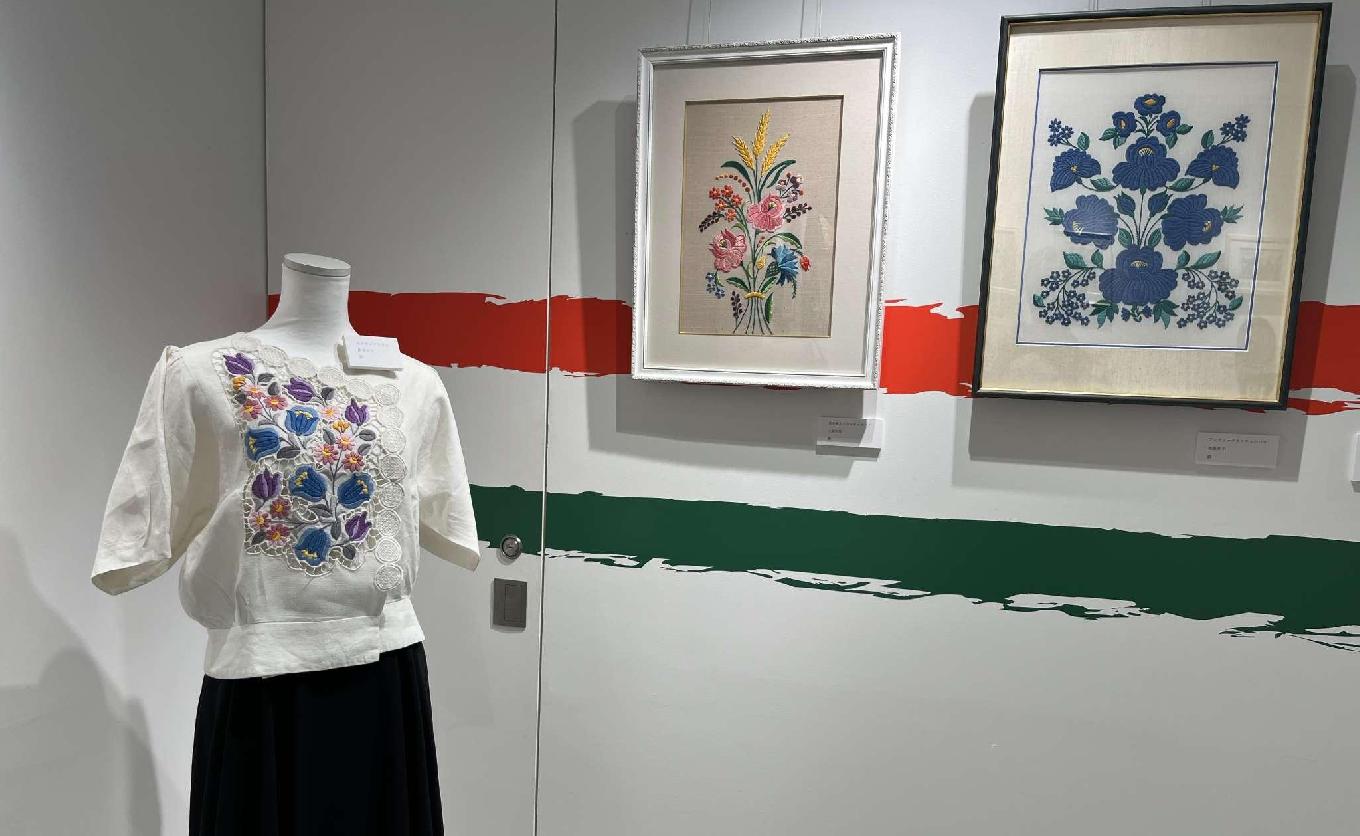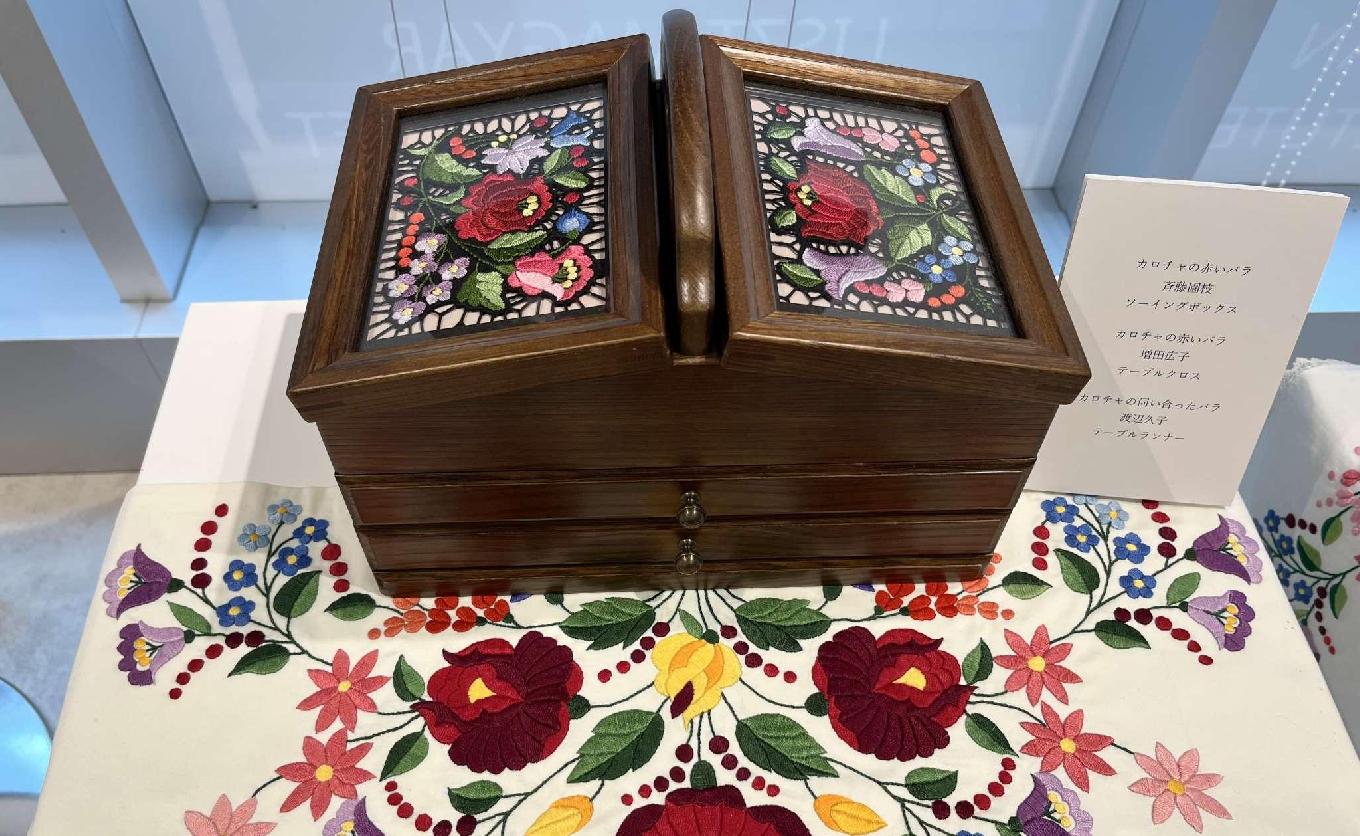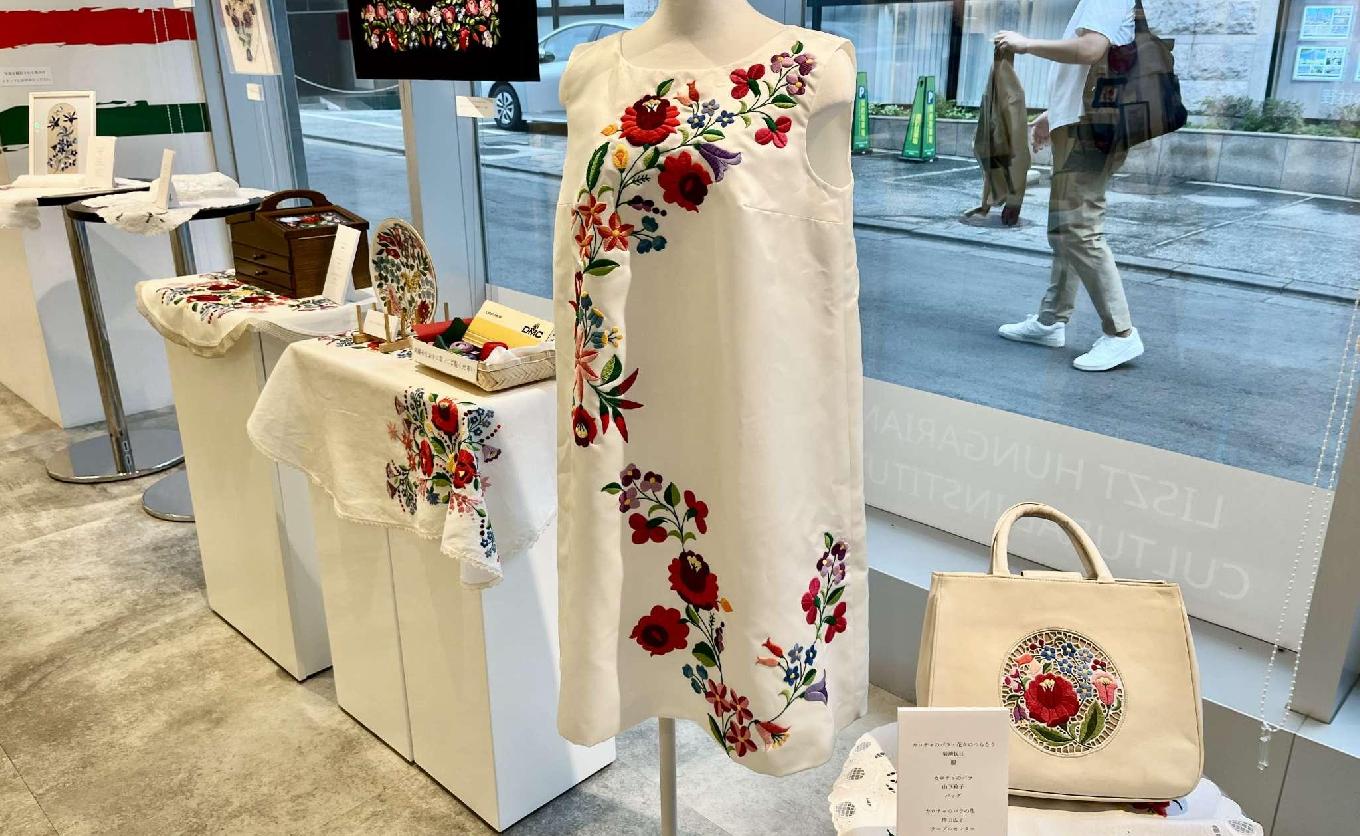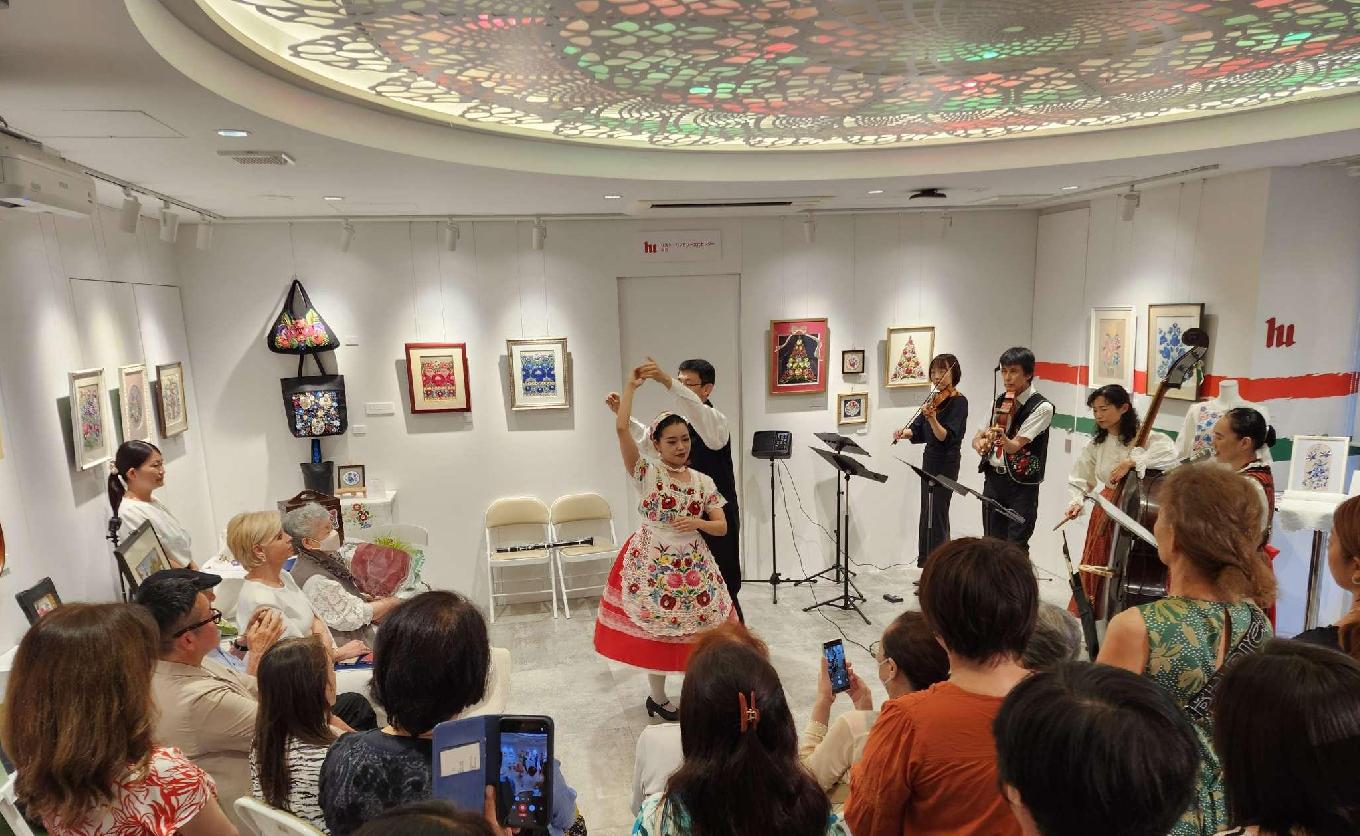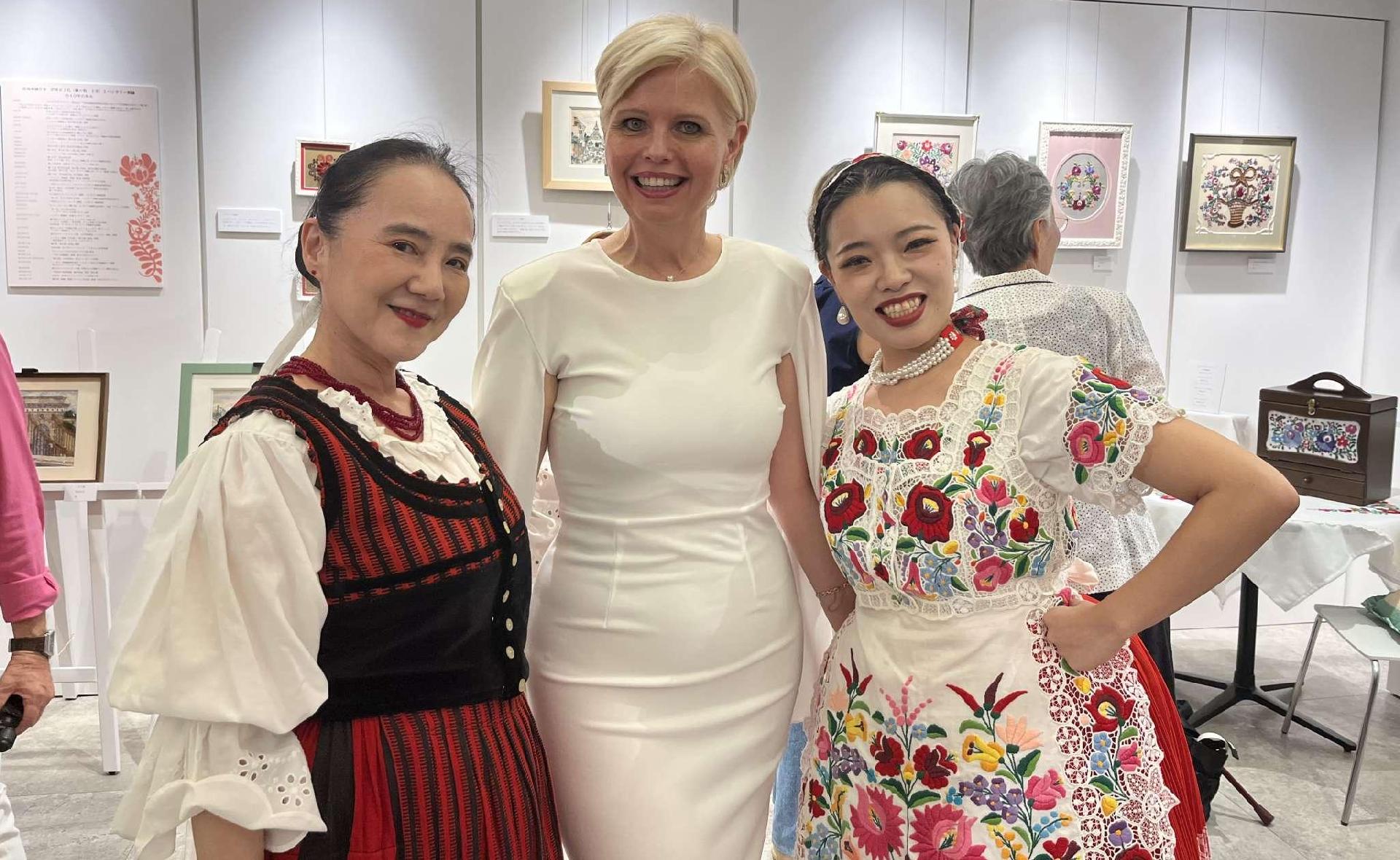
Great Success for the New Exhibition of the Liszt Institute Tokyo
An exhibition titled Memories Woven into Embroidery – Hungarian Embroidery through Japanese Eyes has opened at the Liszt Institute Tokyo. On view until November 28, the exhibition showcases Japanese artists who express their love and respect for Hungarian embroidery culture through their works. The successful exhibition will also be enriched with a series of cultural programs during its run.
The exhibition presents Hungarian embroidery works created by Japanese artists who have been engaged in Hungarian embroidery for more than forty years. The embroidery circle, led by Mrs. Kyoko Ito and the members of the Nui no Wa embroidery group, was inspired by their love for Hungarian embroidery and their travels to Hungary. The group was founded by Itō Kyōko in 1991 in Shin-Fuji, Shizuoka Prefecture, and moved to Tachikawa, Tokyo in 2011. The members have visited Hungary several times and presented their works at numerous exhibitions. The oldest artist in the group is currently ninety-seven years old. Visitors can admire fifty embroidered works by fourteen members of the group, including tablecloths, wall hangings, home décor objects, and embroidered clothing. The artists express their decades-long affection and respect for Hungary and Hungarian embroidery culture through their works. The colorful Kalocsa and Matyó embroideries, as well as motifs evoking Hungarian landscapes and buildings, offer visitors an experience akin to traveling to Hungary itself. The exhibition is a fascinating imprint of forty years of memories and cultural connections, stitched together with needle and thread.
The exhibition unfolds in three thematic parts. The first presents the traditions of Kalocsa and Matyó embroidery, which represent unique regional varieties of Hungarian folk art. Kalocsa embroidery is characterized by brightly colored floral patterns and delicate, openwork stitches that suggest a dynamic yet elegant rhythm and create a striking visual experience. By contrast, Matyó embroidery, inscribed on the UNESCO Intangible Cultural Heritage list, is made with thicker thread and known for its layered floral motifs. The embossed texture and depth of the embroidery are particularly captivating.
The second section titled Travel across Hungary’s Beautiful Scenery through Embroidery!. Many of the artists have traveled to Hungary, and their works immortalize these experiences. The embroideries depict Budapest’s iconic buildings, the stunning panorama of the Buda Castle Hill, the cobblestone streets and nostalgic houses of Hollókő, a UNESCO World Heritage site, as well as the idyllic beauty of the Hungarian countryside.
The third section is called The Enchantment of Everyday Embroidery. The reason is that in the exhibition not only artistic wall hangings and fine art works are displayed, but also everyday objects that could easily find a place in anyone’s home. Cushions, bags and cosmetic boxes adorned with hand embroidery bring uniqueness to daily life and enrich the atmosphere of the home with subtle elegance.
The exhibition is accompanied by a series of side events. On October 2 and November 6, embroidery workshops will be held under the title Let’s Travel to Hungary through the Experience of Embroidery!. On October 29, visitors can also attend a conversation with Mrs. Kyoko Ito, the leader of the embroidery circle, titled 40 Years under the Spell of Hungarian Embroidery.

